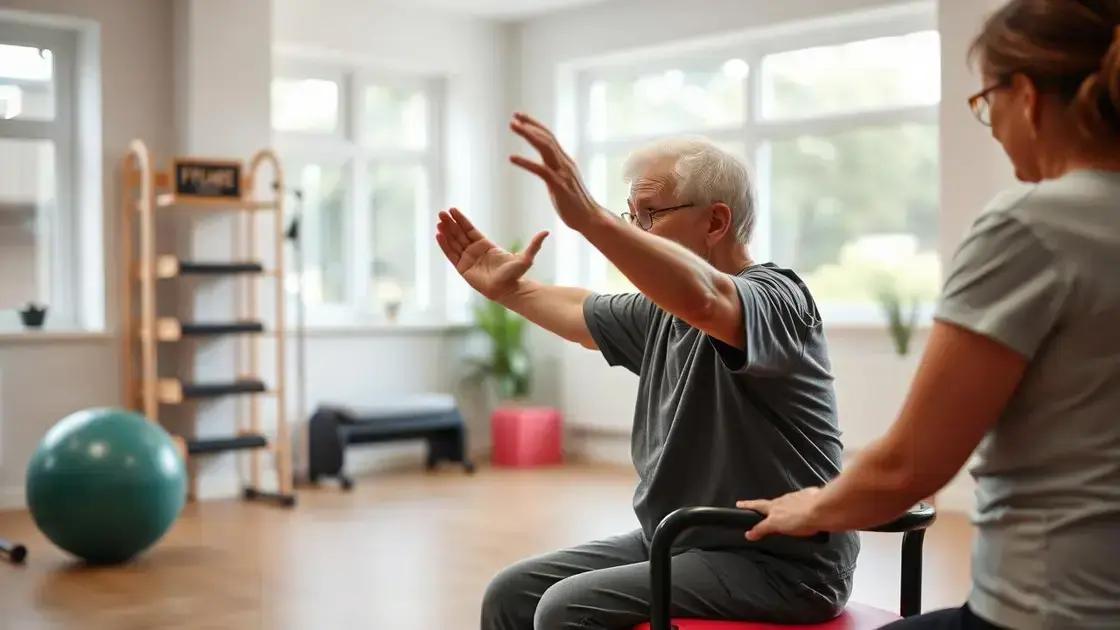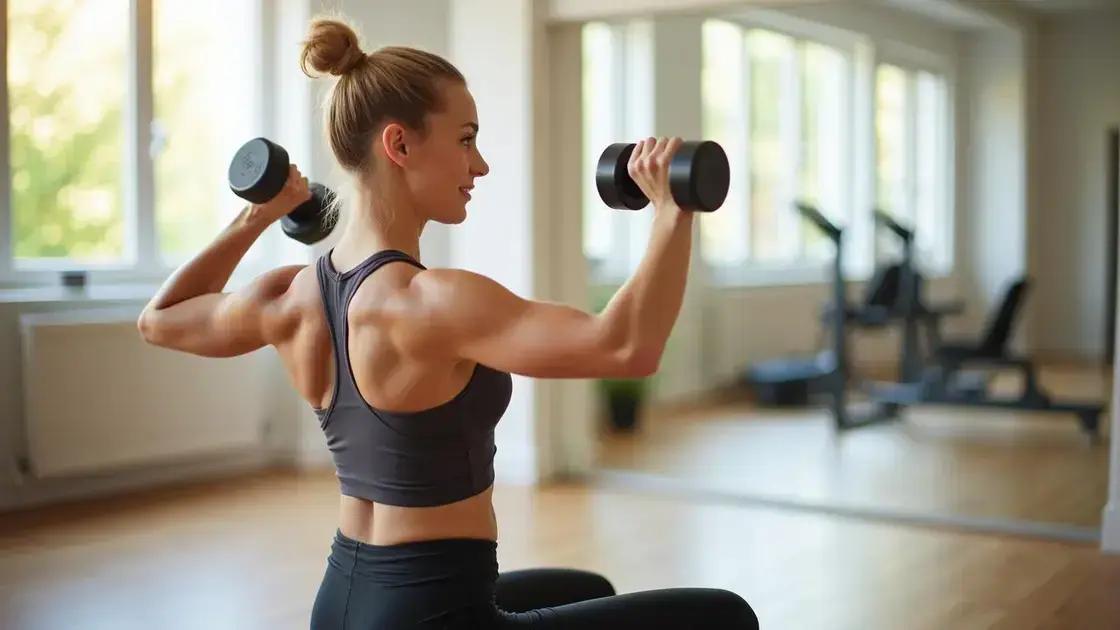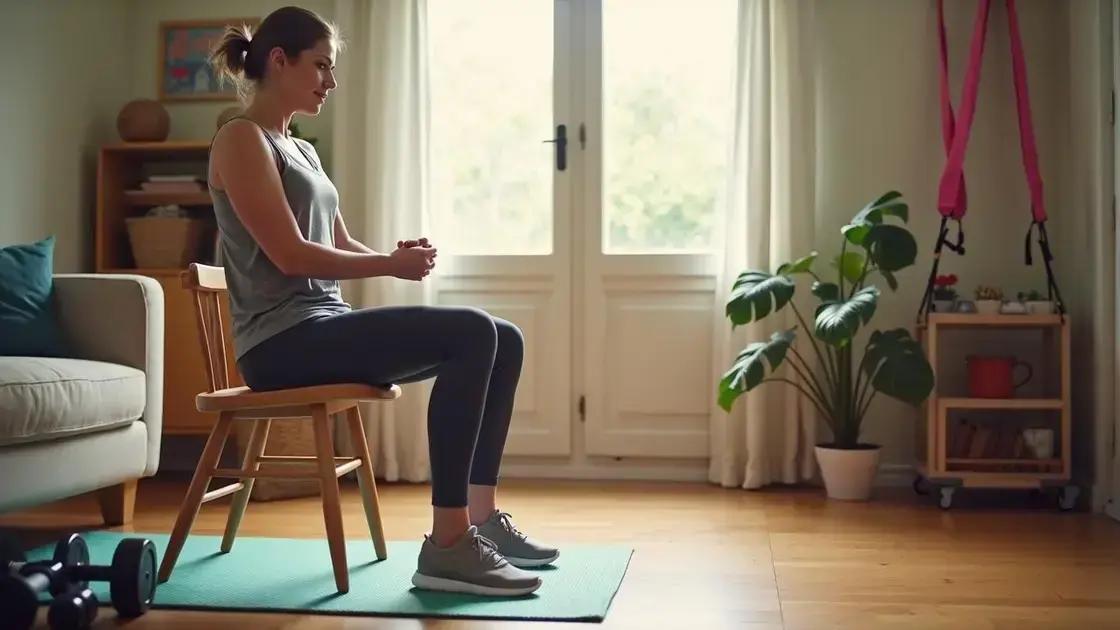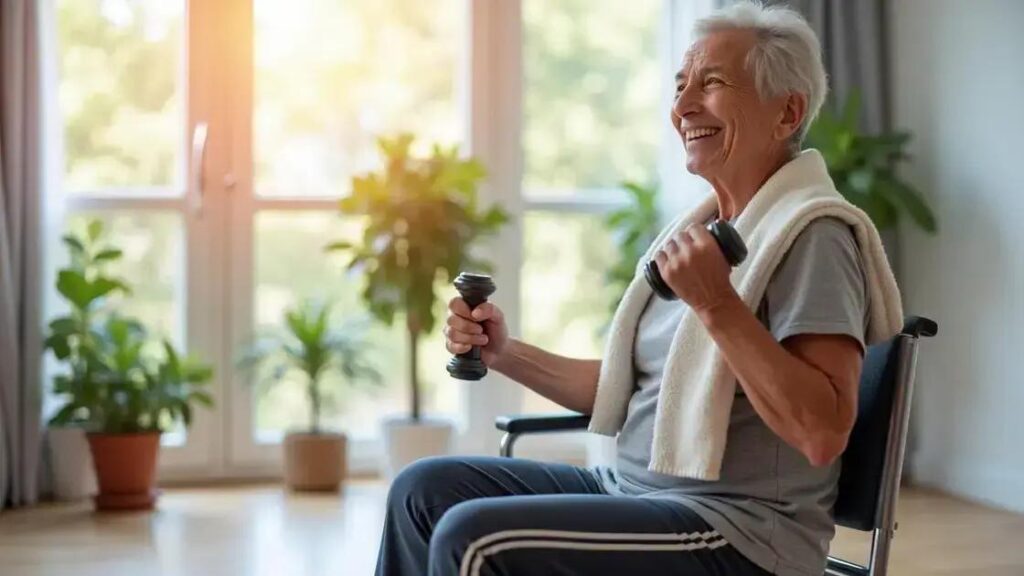Seated workouts offer numerous benefits, including improved mobility, enhanced strength, and increased flexibility, making them ideal for individuals of all ages and fitness levels, particularly for those with mobility challenges.
Seated workouts are a fantastic way to enhance mobility and strength, catering to people of all ages and fitness levels. These exercises can be performed safely while sitting, making them ideal for those with limited mobility or those recovering from injuries. In this article, we will delve into the advantages of seated workouts, explore how they promote greater mobility, and provide practical tips for integrating these beneficial exercises into your daily routine.
Understanding Seated Workouts

Seated workouts are an excellent way to enhance fitness without needing to stand up. They are particularly beneficial for people who may have mobility issues or are recovering from an injury. These workouts can be performed in various settings such as at home, in a gym, or even in a chair at work.
What Are Seated Workouts?
Seated workouts focus on exercises that can be completed while sitting. This means you can enjoy the benefits of strength training, flexibility, and mobility enhancing routines without putting undue strain on your body.
Who Can Benefit?
Many different people can benefit from seated workouts. Seniors, individuals with disabilities, and even those with back problems can find these workouts accommodating. Also, busy professionals looking for a quick workout during their breaks may find seated exercises ideal.
Common Seated Exercises
Some popular seated exercises include:
- Seated leg lifts: These help strengthen the legs.
- Seated arm curls: These target the biceps and triceps.
- Seated torso twists: Great for core strength and flexibility.
- Seated marches: Good for practicing coordination and leg strength.
As you can see, seated workouts vary and can be tailored to meet different fitness goals.
Why Choose Seated Workouts?
Choosing seated workouts allows for a safe, effective way to stay active. This is particularly important for those unable to stand for long periods, as these workouts help maintain strength and mobility while reducing the risk of falls or overexertion.
Benefits for Mobility

Mobility is essential for overall health, especially as we age. Seated workouts provide unique benefits for enhancing mobility. These workouts help improve the range of motion in your joints while strengthening the muscles around them.
Improved Flexibility
Seated exercises promote flexibility by allowing muscles and joints to stretch safely. Regular practice can lead to improved flexibility, making daily activities easier.
Joint Health
By engaging in seated movements, you can keep your joints healthy. Movement lubricates the joints, which can reduce stiffness and discomfort. This is particularly helpful for those with arthritis or other joint issues.
Enhanced Balance
Performing seated workouts can also enhance balance. Many exercises encourage core stability, which is crucial for maintaining your balance whether standing or sitting.
Accessibility
Seated workouts are easier to perform for individuals with limited mobility. You can increase your movement level without risking falls or injuries, making it an intelligent choice for many.
By improving flexibility, joint health, and balance, seated workouts play a vital role in enhancing mobility, allowing individuals to enjoy a more active and fulfilling life.
Strength Building from a Seated Position

Strength building from a seated position is an effective way to enhance muscle strength while minimizing the risk of injury. Whether you’re sitting on a chair, a bench, or a stability ball, you can perform various exercises.
Key Muscle Groups Targeted
Seated workouts allow you to target major muscle groups, including:
- Arms: Exercises such as seated bicep curls are fantastic for developing arm strength.
- Shoulders: Shoulder presses can be performed while seated, enhancing shoulder strength and stability.
- Core: Seated torso rotations help strengthen abdominal muscles, improving overall core stability.
- Legs: Perform leg lifts and squats in a seated position to build leg strength safely.
Benefits of Strength Training
Building strength from a seated position provides several advantages:
- Lower Injury Risk: Seated positions reduce stress on the spine and lower body, minimizing the risk of injuries.
- Improved Posture: Strength training strengthens the back and abdominal muscles, promoting better posture.
- Functional Strength: Increased strength can improve daily activities, making tasks easier and more manageable.
Regularly incorporating seated strength workouts into your fitness routine can yield significant strength gains while being safer for all fitness levels.
How to Integrate Seated Workouts into Your Routine

Integrating seated workouts into your daily routine can be easy and impactful. Here are some practical tips to help you get started.
1. Set a Schedule
Designate specific times during the week for your seated workouts. Consistency is key; aim for at least three to four sessions a week.
2. Start Small
If you’re new to seated workouts, begin with short sessions lasting 10 to 15 minutes. Gradually increase the duration and intensity as you feel more comfortable.
3. Create a Dedicated Space
Choose a comfortable and quiet area in your home for your workouts. Having a designated space can help you stay focused and motivated.
4. Use Simple Equipment
Incorporate lightweight dumbbells, resistance bands, or even household items like water bottles to enhance your workouts. These tools increase resistance and effectiveness.
5. Choose Varied Exercises
Mix different seated exercises to keep your routine interesting. Include movements for your arms, legs, and core to ensure a full-body workout.
6. Join a Class
If possible, participate in online seated workout classes or follow video demonstrations. This can provide structure and motivation.
7. Listen to Your Body
Always pay attention to how your body feels. If an exercise causes pain or discomfort, stop and adjust your routine as needed.
Embracing Seated Workouts for a Healthier Lifestyle
Incorporating seated workouts into your routine unlocks numerous benefits for both mobility and strength. These workouts are accessible for all, regardless of age or fitness level, making them a perfect choice for those looking to enhance their physical well-being.
By understanding the unique advantages of seated exercises, such as improved mobility, core strength, and lower injury risk, you can transform how you approach fitness. Integrating these workouts into your schedule is straightforward, allowing you to establish a consistent and enjoyable fitness habit.
Ultimately, seated workouts can empower you to lead a more active life, enhancing your quality of life and overall health.
FAQ – Frequently Asked Questions about Seated Workouts
What are seated workouts?
Seated workouts are exercises performed while sitting, making them accessible for individuals of all fitness levels, especially those with limited mobility.
What are the benefits of seated workouts?
Seated workouts improve mobility, strengthen muscles, enhance flexibility, and provide a safe way to exercise without the risk of falls.
Who can benefit from seated workouts?
People of all ages, including seniors, individuals recovering from injuries, and those with mobility challenges, can greatly benefit from seated workouts.
How often should I do seated workouts?
Aim to do seated workouts three to four times a week for optimal results, starting with sessions lasting 10 to 15 minutes.
What types of exercises can I do while seated?
You can do various exercises such as seated leg lifts, arm curls, torso twists, and light resistance training to target different muscle groups.
Do I need special equipment for seated workouts?
No special equipment is required, but using lightweight dumbbells, resistance bands, or even household items can enhance the effectiveness of your workouts.












